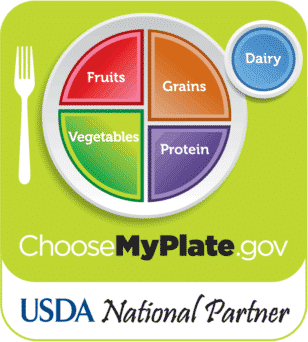Here’s a not-so-fun fact: more than 80% of Americans are not meeting their recommended daily portion of fruits and vegetables. The good news? Boosting your daily dose may be easier than you think. With a few small changes, here are some sneaky ways to add more fruit and vegetables to your diet:
- Switch up your staples – without sacrificing flavor.
Look beyond your go-to sauces and marinades, in favor of healthier options that cut fat and sodium without forfeiting taste. When marinating meats such as shoulder steak, flank steak, or London broil, try our tangy Pineapple Teriyaki Sauce. Along with adding flavor, pineapple juice contains enzymes that help tenderize the meat. This sauce is also delicious when brushed on salmon before grilling or broiling, or as a tasty seasoning to stir-fries.
Another simple swap: replace some of the oil in your favorite salad dressing recipes with 100% fruit juice, like we did with our grapefruit-basil dressing. Along with slashing fat, this will add some extra flavor and nutrients. For more nutritious snacking, try a fruity take on a traditional salsa.
- A whole lot of options.
When working to increase your fruit and vegetable intake, it’s important to remember that all forms count. Your daily dose doesn’t need to be limited to fresh, whole fruits, or vegetables. All forms can satisfy your nutritional needs – whether they be fresh, frozen, canned, dried, or 100% juice.
Recognized as nutritionally equivalent to whole fruit by the US Dietary Guidelines, 100% juice serves as a convenient and affordable option – particularly for those of us with busy lifestyles. In fact, the 2015- 2020 Dietary Guidelines say that up to half of your daily fruit intake may come from 100% juice.
Along with sipping 100% juice, you can also combine a tasty blend of power-packed nutrients. Check out our Orange Banana and Pineapple Coconut smoothies for some easy-to-whip-up inspiration.
- Keep it creative.
If you have children (or adults) in your family who are less willing to eat fruits and vegetables, try sneaking these healthy additions into their favorite recipes. Cooking shredded vegetables like carrots, butternut squash, mushrooms and zucchini into tomato sauces is an easy way to bump up the fiber and nutrient quotient in family favorites like pasta dishes and pizzas. A similar blend of vegetables can also be added to ground meat for hamburgers, sloppy Joes, and chili.
Soups are another great way to boost produce intake – particularly for picky eaters. Loaded with antioxidants, our Roasted Cauliflower Soup with Pomegranate Juice takes less than 30 minutes to whip up. Plus, our Chilled Blueberry Soup features a tasty blend of fresh blueberries, apple juice, and low-fat yogurt – making it the perfect summer refreshment.
- Stock up.
Make fruits and vegetables the snack you and your family reach for by keeping your fridge stocked with options. Wash, prep, and store the produce as soon as you get home from the grocery store so that it’s ready to use or eat at a moment’s notice.
Staying stocked up also helps ensure that you are always equipped to bump up your portions – which is another sneaky shortcut to meet your nutritional goals. To add more produce, try doubling the amount of vegetables called for in a recipe. This will help boost flavor, increase nutritional value, and help you meet your daily veggie quota.
For more fun ways to increase your daily dose of fruit and vegetables, check out our recipe page. To learn more about how 100% juice can fit into your diet, download our Toolkit.





